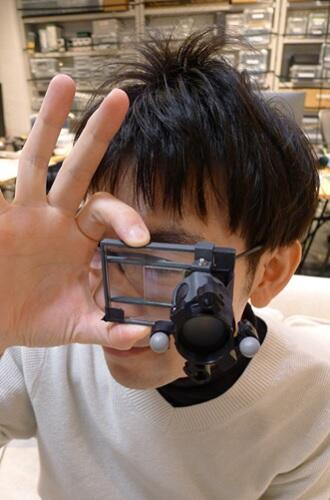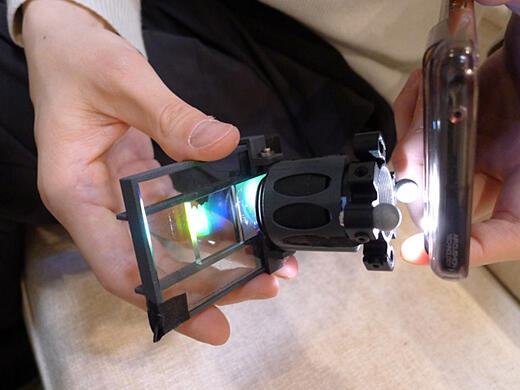A research group led by the University of Tokyo has developed technology to make AR (Augmented Reality) glasses—devices that overlay digital images onto the real world—thinner and lighter. Using diffractive optical elements that control the direction of light along with transparent waveguides, the system can consistently display images projected by external projectors even when the user turns their head. Lighter AR glasses can reduce fatigue during physical activities or extended use, potentially expanding their applications.

In recent years, AR glasses have become increasingly widespread alongside VR (Virtual Reality) goggles and glasses. Games like "Pokémon GO," which makes characters appear when smartphones are held up to scenery, represent a type of AR. Microsoft's HoloLens and Meta's prototype model Orion are examples of such devices.
However, incorporating light sources for digital images and batteries into glasses makes them heavy. According to Project Associate Professor Yuta Itoh, who studies Information Science at the University of Tokyo's Graduate School of Interdisciplinary Information Studies, current AR glasses weigh about twice as much as regular glasses, which typically weigh less than 50 grams, limiting comfort and performance improvements. The researchers thought that by applying projector technology to project images from the external environment onto the glasses, they could eliminate the need for power sources such as batteries and reduce weight.
However, with external projection methods, problems arise such as projected images lagging when the user moves their face or becoming invisible when the angle deviates more than 5 degrees from directly in front. To address these issues, the team used spherical markers that adjust the projection direction and focus according to the position and orientation of the glasses. The system moves the angles of lenses and mirrors in response to the movement of these markers.

Additionally, thick glasses can be uncomfortable to wear. Itoh has developed a technology where diffractive optical devices receive images through the glasses and project them from the side of the glasses onto transparent waveguides that can efficiently transmit light in specific directions. This allows users to see the images even when their faces turn 20-30 degrees away.

Itoh explained that with these lightweight, thin AR glasses that receive images from external sources, "By placing several projectors in the external environment to transmit images, users can work while wearing glasses and moving around—activities that were difficult to do for extended periods with existing AR glasses due to fatigue."
Specifically, potential applications include working in factories while following procedural guides, exercising or doing fitness activities while watching demonstrations, or viewing exhibits in museums while seeing explanations similar to audio guides.
The research was conducted in collaboration with the University of Osaka, the VR service company Cluster Inc. (Shinagawa City, Tokyo Prefecture), the Metaverse Research Institute, and University College London in the UK. The findings were presented at the international conference "IEEE VR 2025," which focuses on VR and AR, held in March.
Original article was provided by the Science Portal and has been translated by Science Japan.




